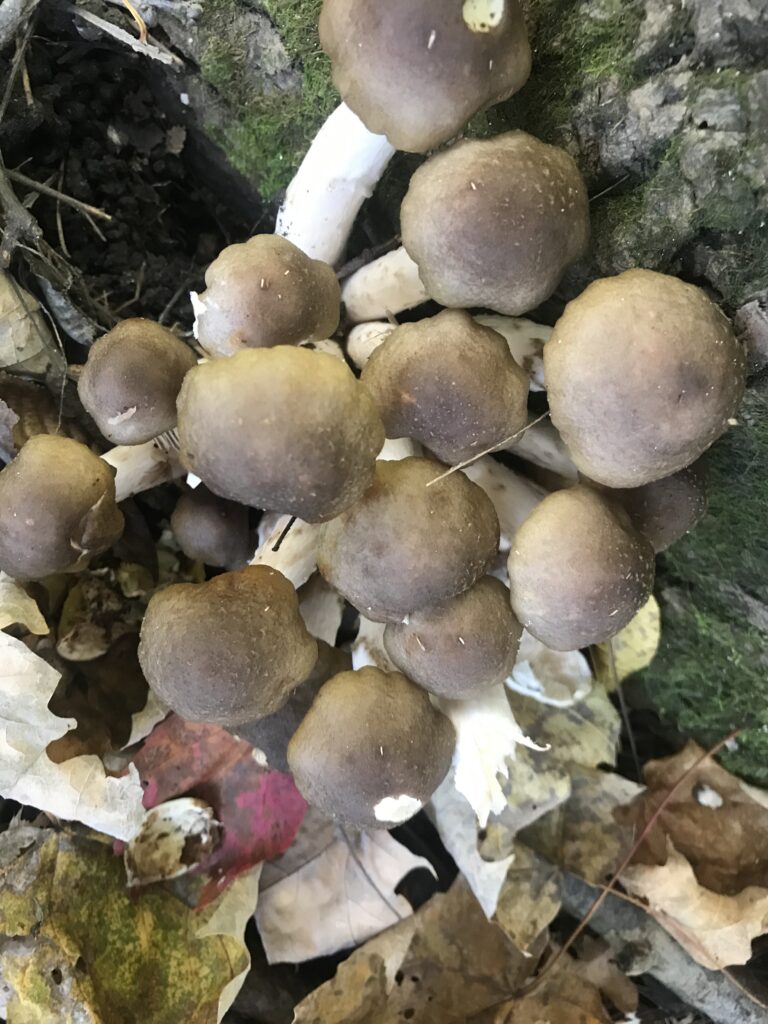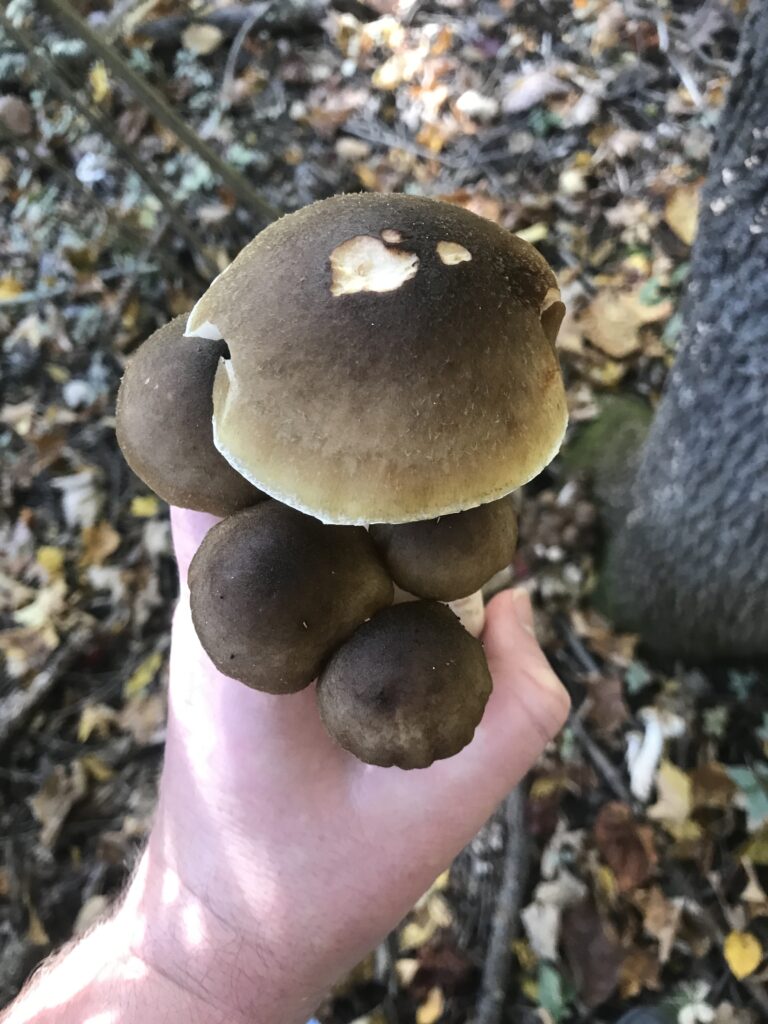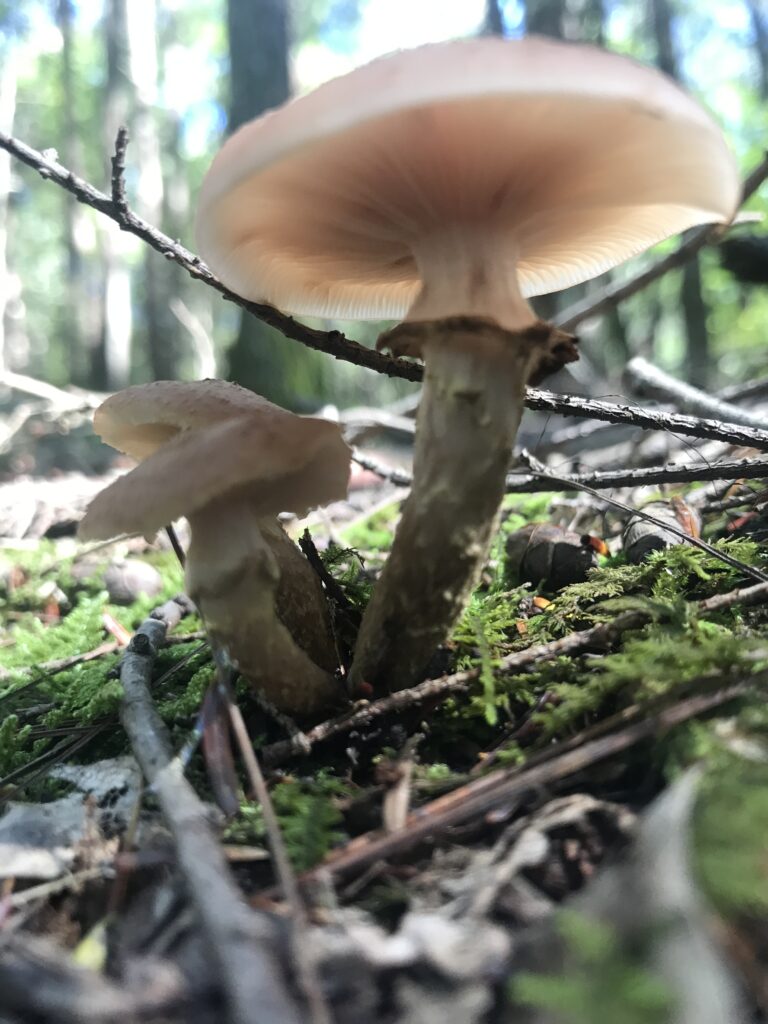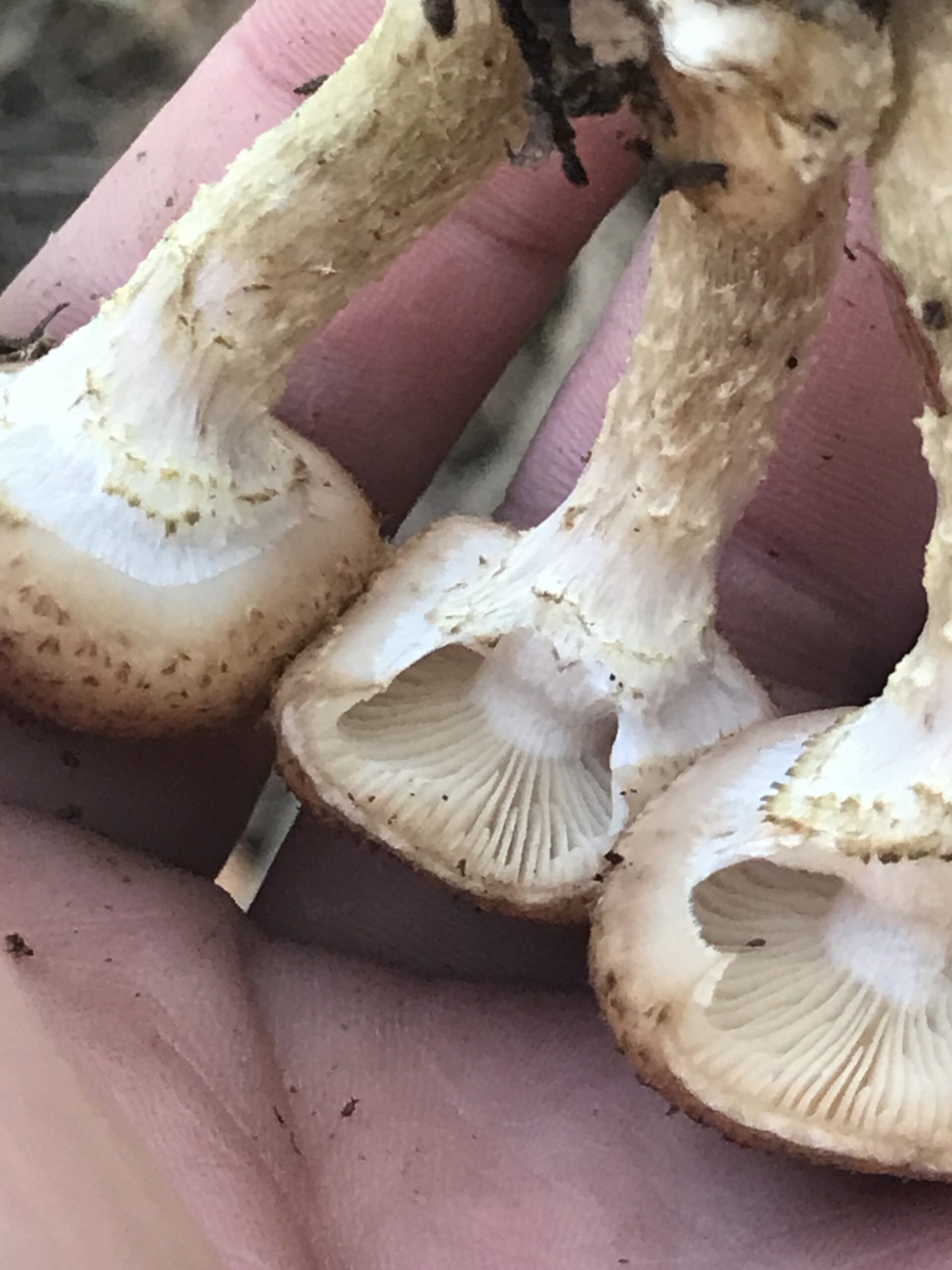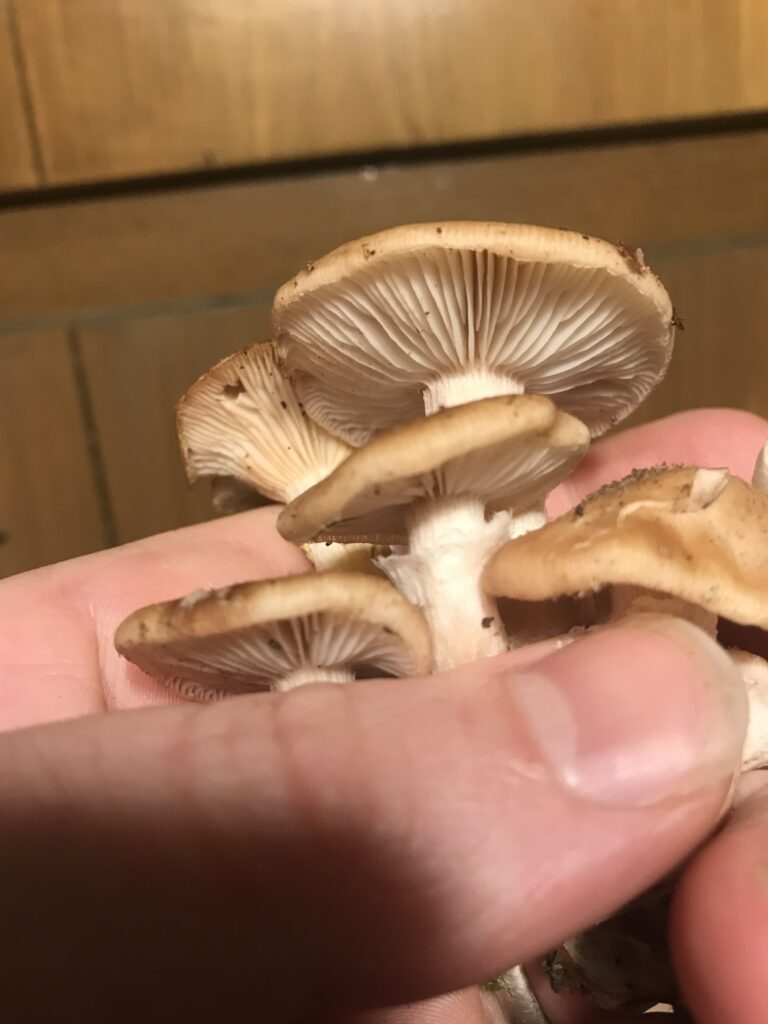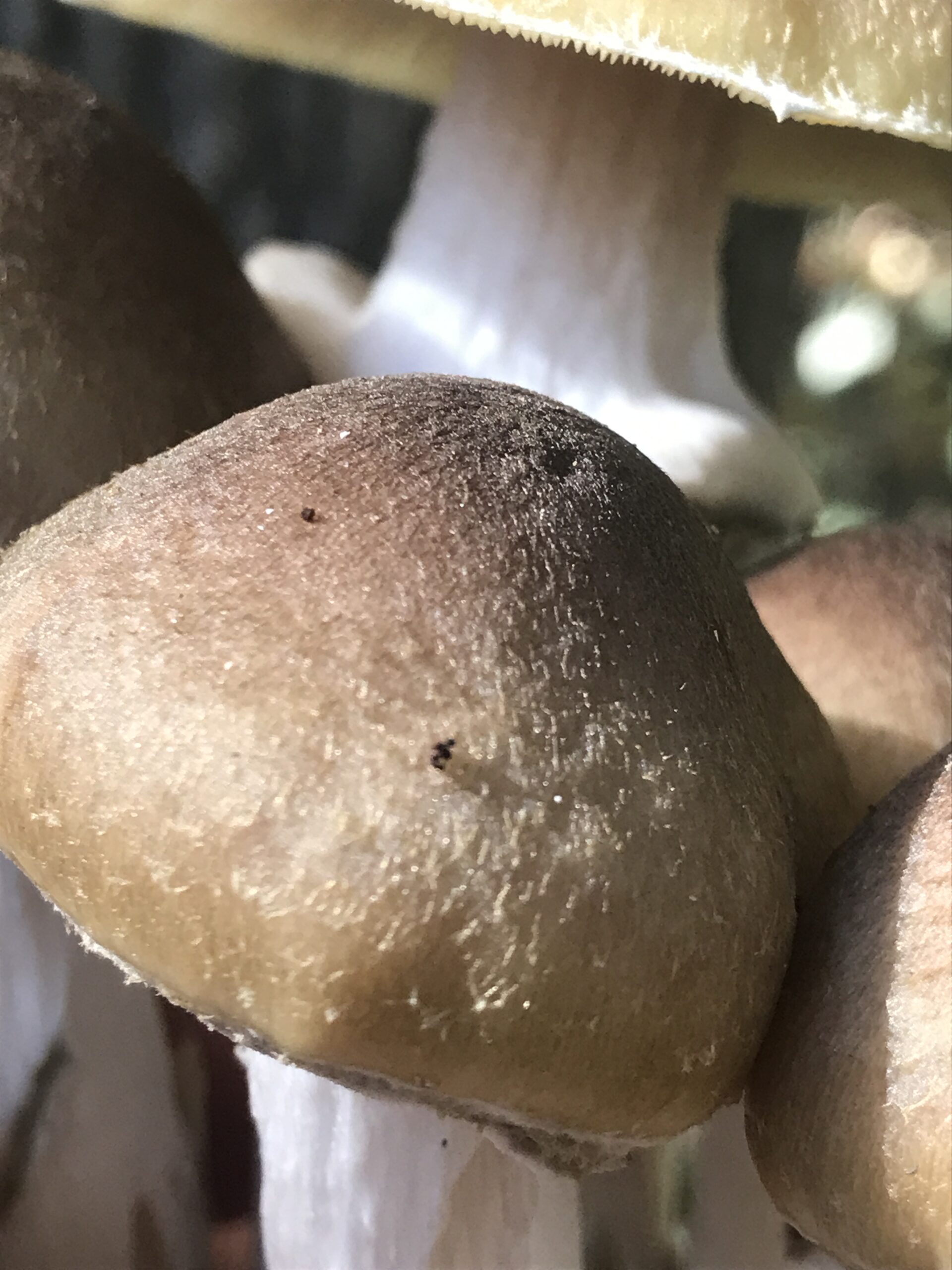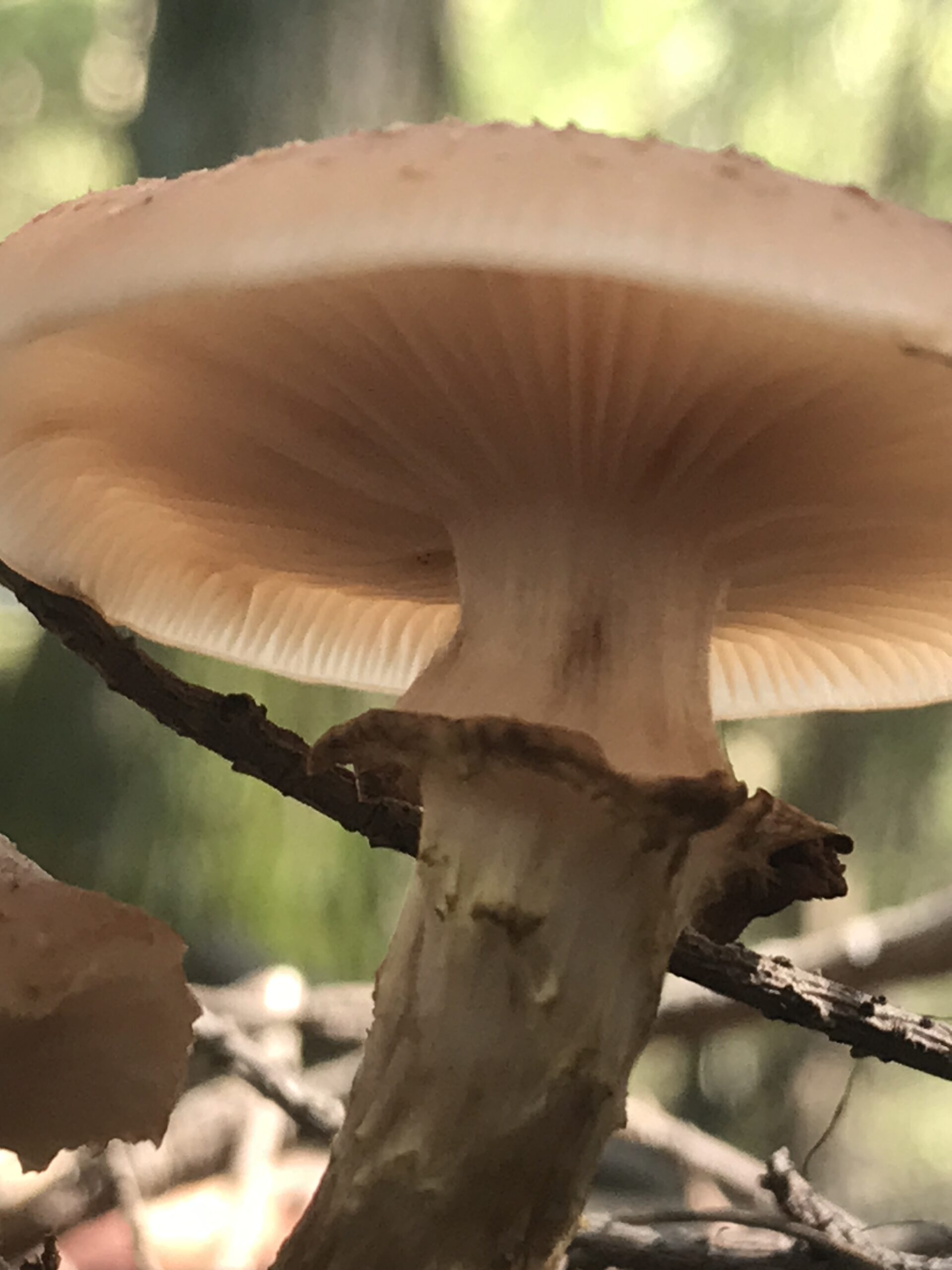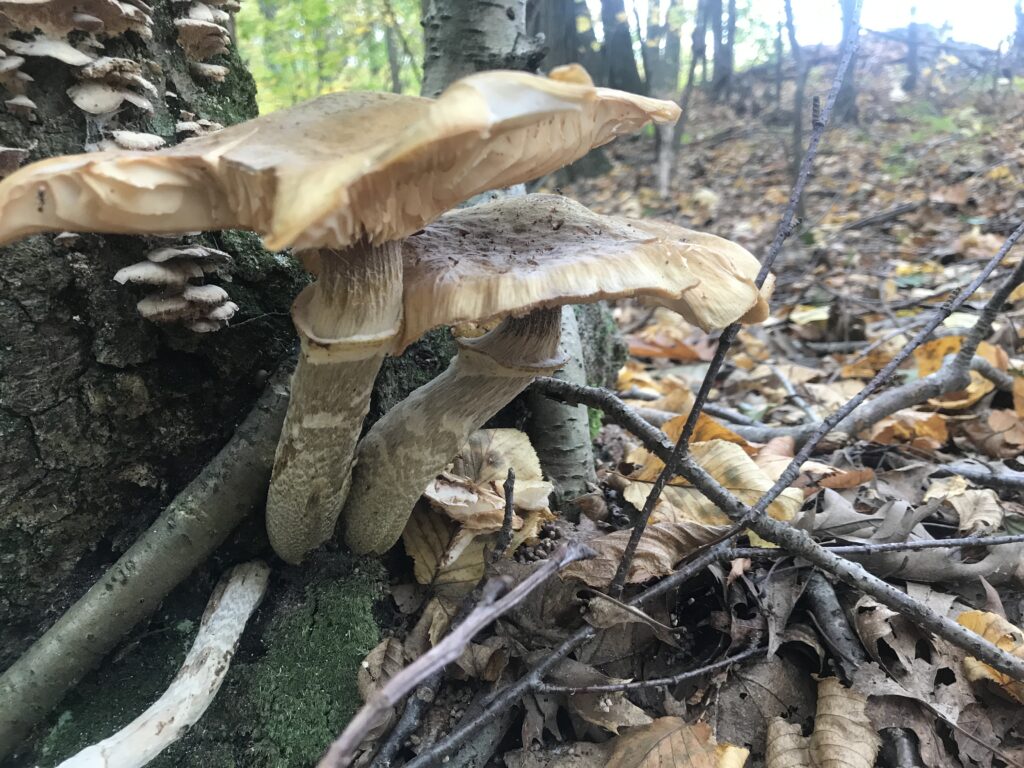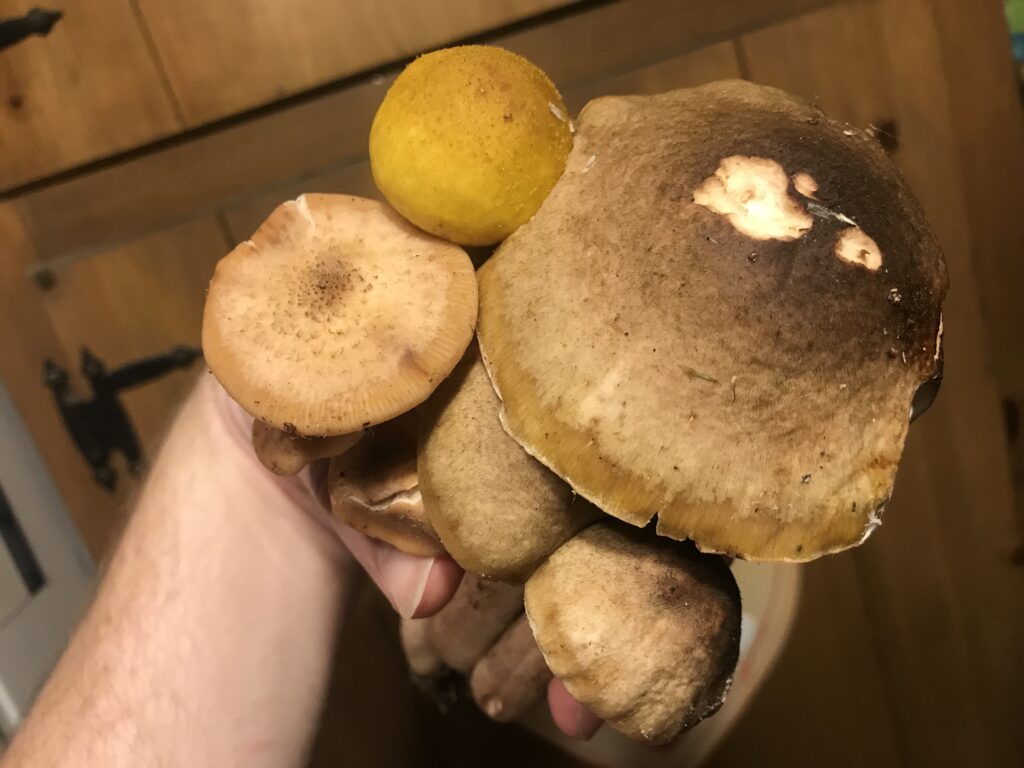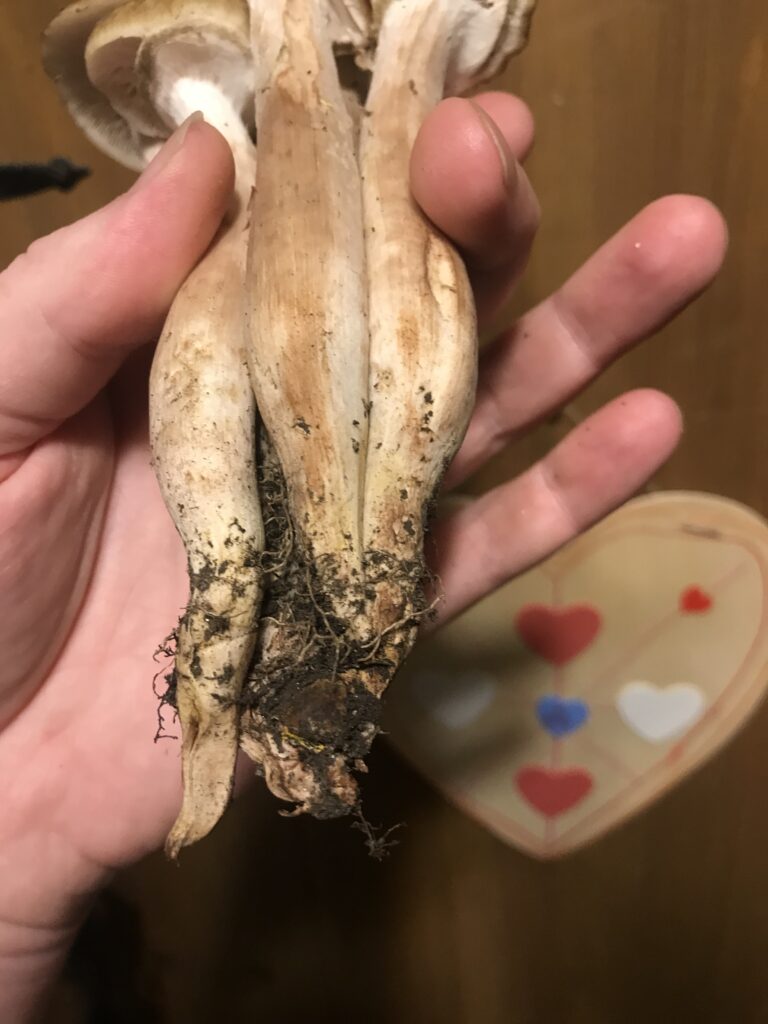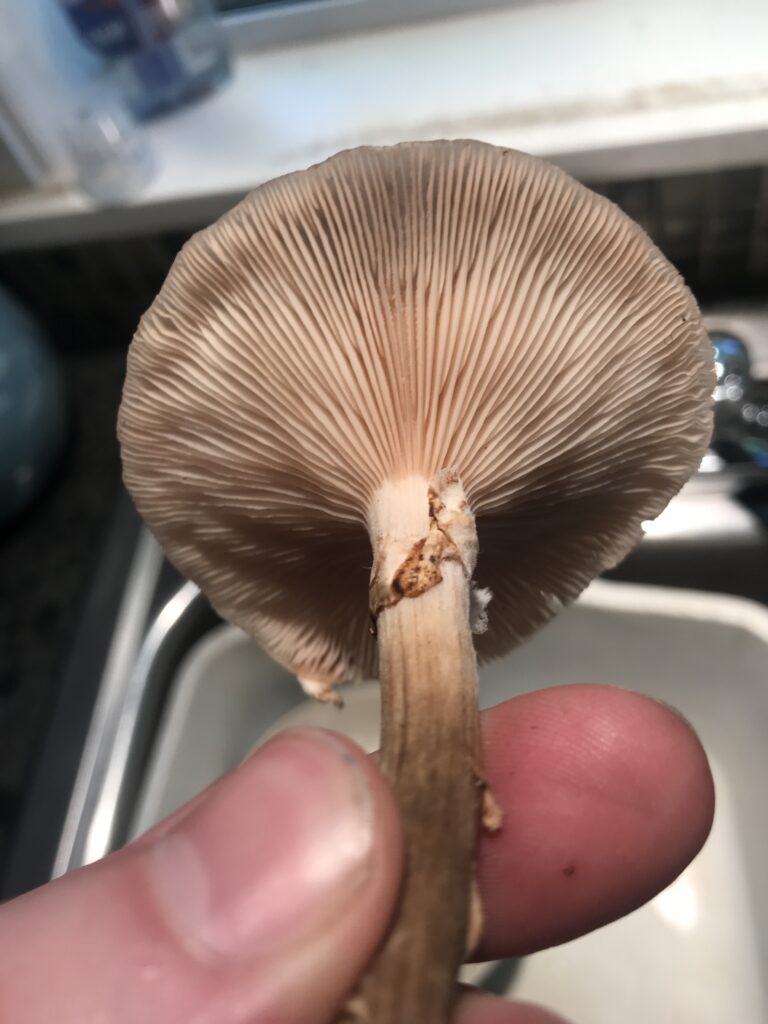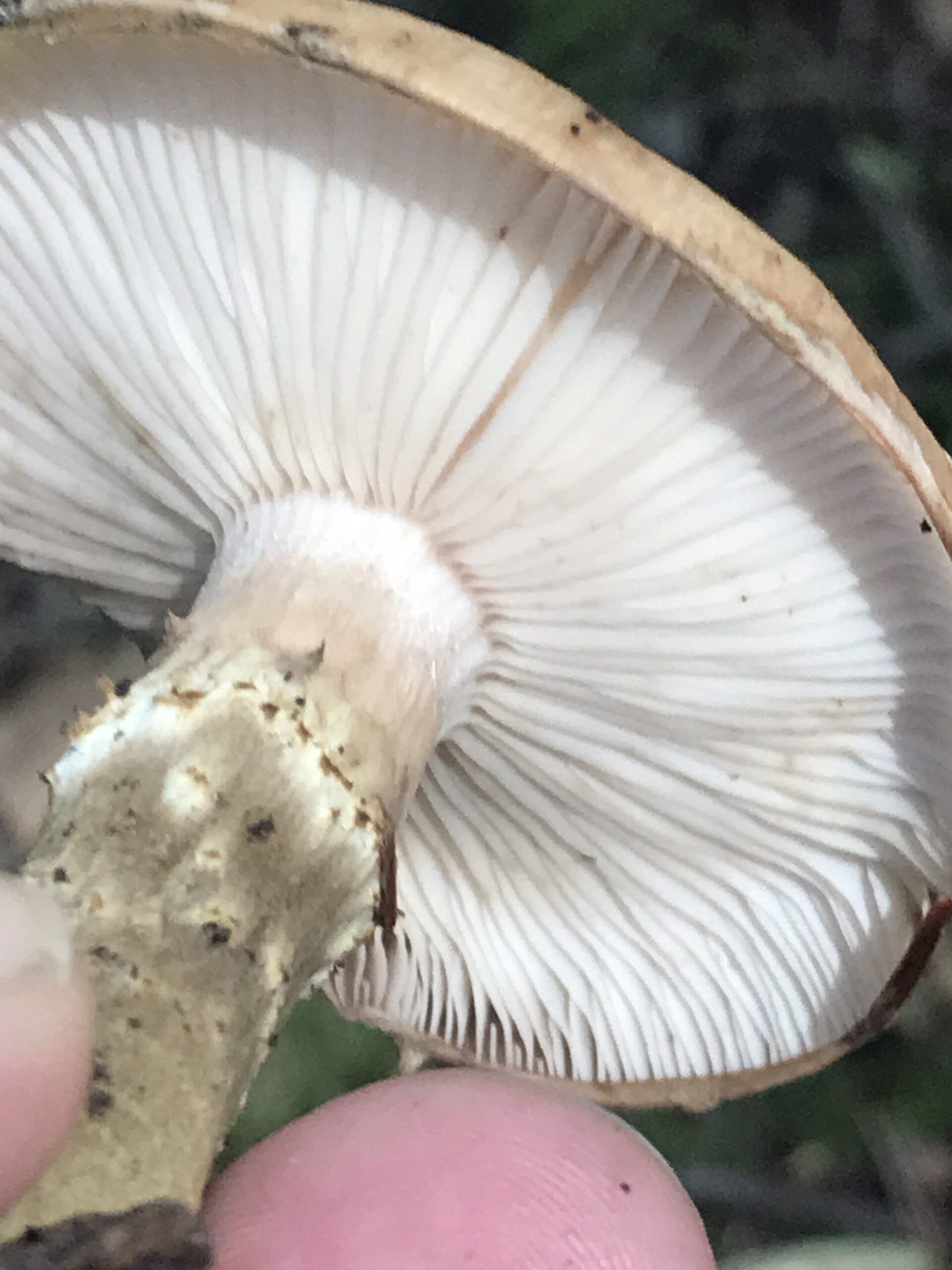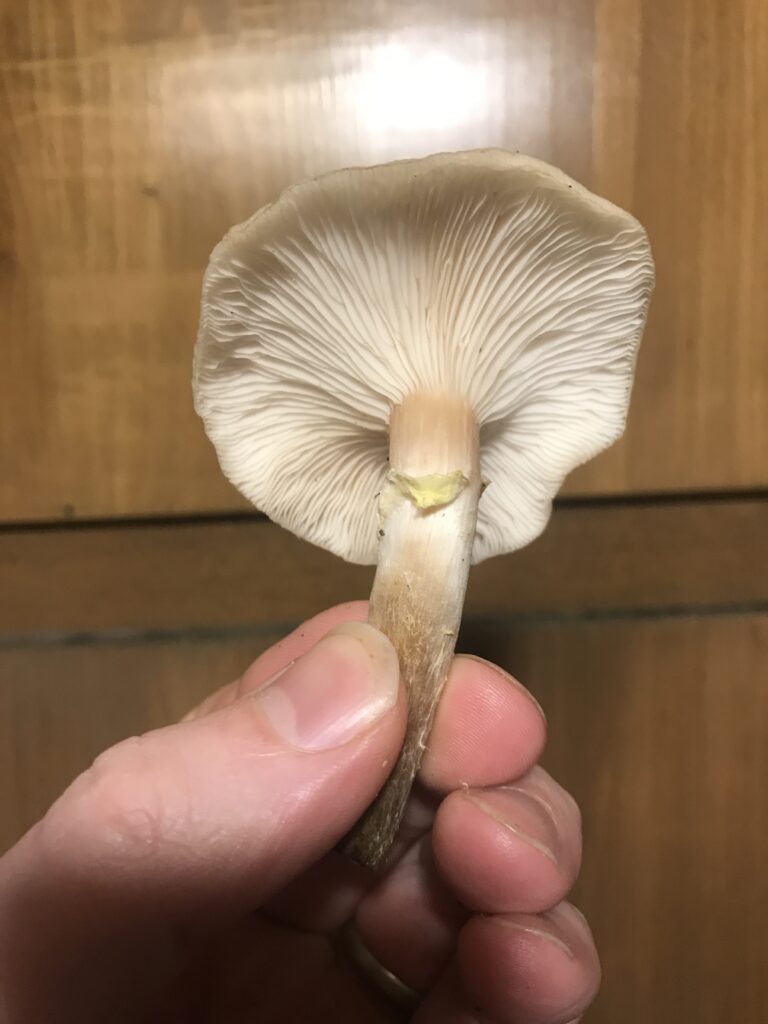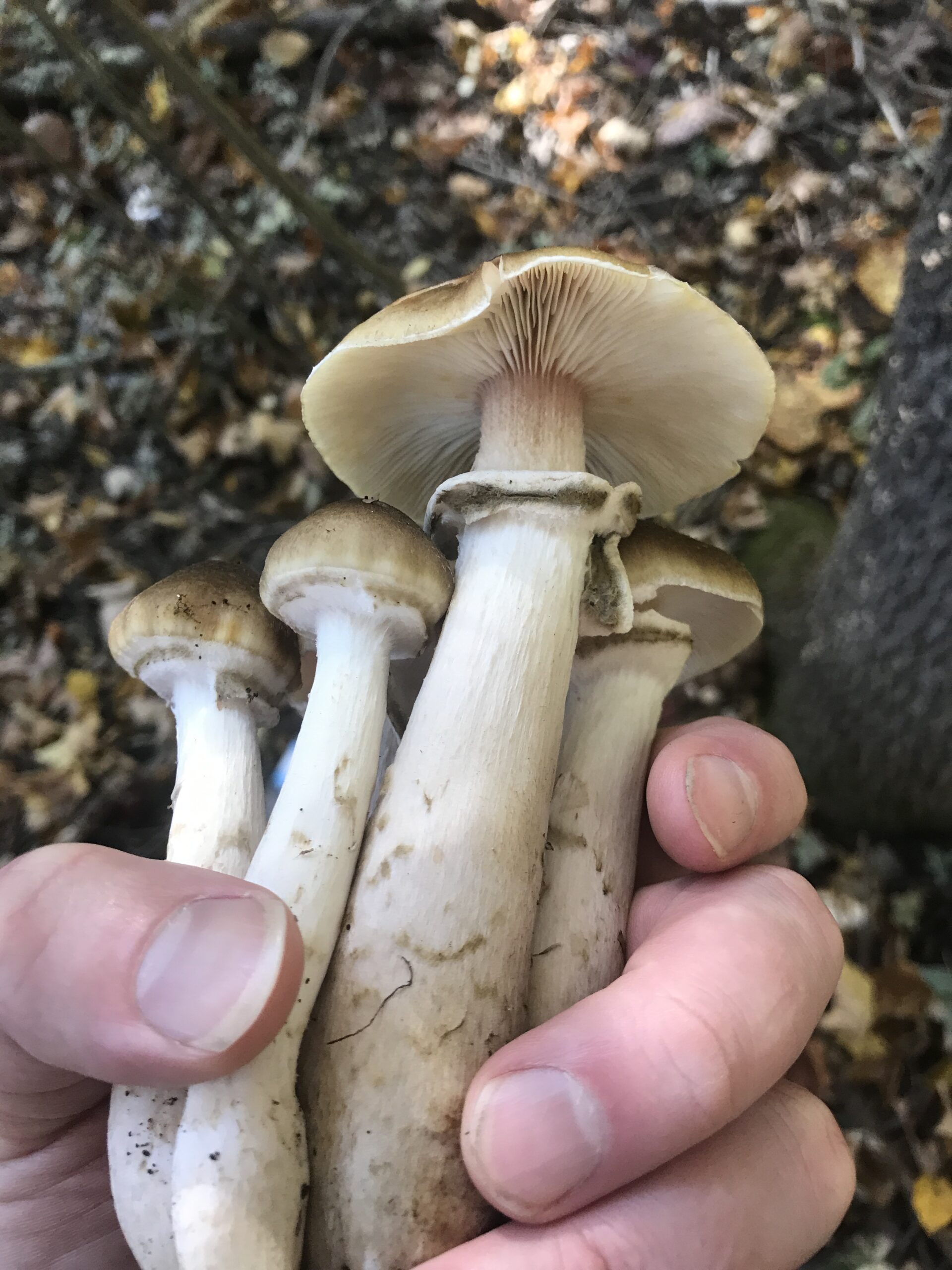
Armillaria ostoyae is probably the more common name, but I for some reason prefer solidipes, probably because they often have a nice solid stem base before it tapers down to a point. These mushrooms are known as honey mushrooms or brown honey mushrooms, and they are characterized by their large, honey-colored cap with more prominent dark fibers on the surface radiating outwards from the center. Unlike Armillaria mellea, which has a yellow cap when young, this mushroom has a brown or dark brown cap. However, like all honey mushrooms, that color fades to a honey color as it matures. It has white to honey-colored gills that release white spores. The stem is typically slender but tough and tapers at the base where they attach to one another in large clusters. The stem will also have a substantial ring left from the partial veil. While the veil and most of the ring will be whitish, it will frequently have a yellowish-brown or brown edge or underside on the ring, which is similar in color to the young cap. This, again, is very similar to Armillaria mellea, except that the typical yellow color is now a brown or yellowish-brown. On older specimens, the stem may darken near the base of the cluster. The flesh itself is white, but when cut, it may stain reddish brown. This isn’t a characteristic that I often hear about or read about, but it seems to be a common feature across other species of Armillaria mushrooms. Armillaria solidipes also appears to favor conifers over hardwoods. Those with a keen eye will notice conifer twigs and needles on the ground in many of the photos below.
It’s not considered a beginner mushroom because it shares features with some deadly mushrooms (white gills, white spores, and a ring on the stem). It is also commonly said that the Deadly Galerina is a poisonous look-alike because it also has a dark cap, honey-colored gills, a ring on the stem, grows on wood, and appears in the same season as honey mushrooms. However, Armillaria solidipes is typically quite large and has more prominent fibers on the cap, whereas Galerinas have smooth caps. However, Armillaria gallica is quite small, and I can imagine a careless forager taking home some Galerina along with them accidentally. Armillaria solidipes, in my experience, is equally as abundant as Armillaria mellea in the fall. So, I look forward to seeing them each year. It may take a little time for you to be certain that you have the right mushroom, especially since these are not the brighter and more distinct yellow color of Armillaria mellea, but they’re a good find once you are comfortable with them.
As far as edibility goes, I like them the best when young and more tender. I prefer the small unopened caps; however, a mature cap can also be chopped into bite-size pieces for a similar effect. Some people have difficulty digesting them due to the high chitin content, which makes them tougher than the average mushroom. But chitin is also what gives them the interesting texture. So, they say to boil them for about ten minutes to help break down the chitin. In any case, they are often quite abundant, and I will freeze them for winter soups. They’re quite a reliable mushroom if you’re into foraging.

